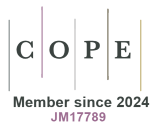Content type
Editorials | Reviews | Original research articles | Point of views | Short communications | Correspondence
Global and Regional Health Technology endorses the EQUATOR Network initiative, which promotes the transparent and accurate reporting of health research. Authors are required to identify the relevant reporting checklist for their study type and ensure that it is completed and submitted along with their manuscript. Adhering to these guidelines enhances the quality and clarity of research reporting, ultimately contributing to the advancement of scientific knowledge
Editorials
The purpose of the editorials is to provide the reader with a balanced overview of relevant and up to date topics, often reflecting the opinion of the Journal. No abstract is required.
Words: max 3000 (excluding figures, tables and references) | Figures/Tables: max 4 | References: 30
Reviews
Reviews, which are peer reviewed, are intended to focus on the current state of knowledge or practice, integrating recent advances with accepted principles and practice, or summarizing and analyzing consensus view of controversial issues in knowledge of practice. A non-structured abstract is required (max 250 words)
Words: max 5000 (excluding figures, tables and references) | Figures/Tables: max 8 | References: 70
Original research articles
Previously unpublished manuscripts, describing clinical, pre-clinical, epidemiological investigations, clinical trials, clinical observations, and other relevant investigations that are based on sound patient series, validated analytical methods, and appropriate statistical evaluation. Systematic reviews and meta-analysis can also be submitted as an original research article. Original research articles are peer reviewed and should be structured as follows: Introduction (clearly stating an objective or hypothesis), Methods (describing the study design and methods applied, including the study setting and dates, patients or participants with inclusion and exclusion criteria, and/or participation or response rates, or data sources, and how these were selected for the study), Results (describing the results of the study in context with the published literature and addressing study limitations), and Conclusions (addressing relevant implications for clinical practice or health policy). A structured abstract (Introduction, Methods, Results, Conclusion) (max 250 words) is required.
Words: max 3000 (excluding figures, tables and references) | Figures/Tables: max 6 | References: max 50
Point of View
Points of view are intended to present viewpoints on the interpretation of recent investigations in any research area. Points of view are peer reviewed articles and must offer a clear presentation of the authors’ perspective and a constructive discussion. A non-structured abstract is required (max 250 words)
Words: max 3000 (excluding figures, tables and references) | Figures/Tables: 4 | References: max 30
Short communication
A concise report of data from original research, focused on initial findings that will be of interest to scientists in other fields. Short communications are peer reviewed and must include a structured abstract (including Background, Aim, Methods, Results, Conclusion, max 250 words)
Words: max 2000 (excluding figures, tables and references) | Figures/Tables: 3 | References: max 7
Correspondence
Letters to the Editor and letters in reply are intended to present opinions or comments on articles published in the Journal. Letters are subject to abridgement and editing for style and content. A letter in reply must cite the title of the letter, e.g., “Response to (Title of Letter)”. An abstract is not required.
Words: max 500 (excluding figures, tables and references) | Figures/Tables: 1 | References: max 5






